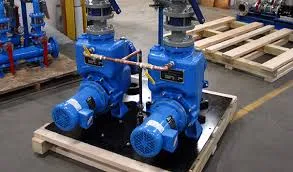English
- Afrikaans
- Albanian
- Amharic
- Arabic
- Armenian
- Azerbaijani
- Basque
- Belarusian
- Bengali
- Bosnian
- Bulgarian
- Catalan
- Cebuano
- Corsican
- Croatian
- Czech
- Danish
- Dutch
- English
- Esperanto
- Estonian
- Finnish
- French
- Frisian
- Galician
- Georgian
- German
- Greek
- Gujarati
- Haitian Creole
- hausa
- hawaiian
- Hebrew
- Hindi
- Miao
- Hungarian
- Icelandic
- igbo
- Indonesian
- irish
- Italian
- Japanese
- Javanese
- Kannada
- kazakh
- Khmer
- Rwandese
- Korean
- Kurdish
- Kyrgyz
- Lao
- Latin
- Latvian
- Lithuanian
- Luxembourgish
- Macedonian
- Malgashi
- Malay
- Malayalam
- Maltese
- Maori
- Marathi
- Mongolian
- Myanmar
- Nepali
- Norwegian
- Norwegian
- Occitan
- Pashto
- Persian
- Polish
- Portuguese
- Punjabi
- Romanian
- Russian
- Samoan
- Scottish Gaelic
- Serbian
- Sesotho
- Shona
- Sindhi
- Sinhala
- Slovak
- Slovenian
- Somali
- Spanish
- Sundanese
- Swahili
- Swedish
- Tagalog
- Tajik
- Tamil
- Tatar
- Telugu
- Thai
- Turkish
- Turkmen
- Ukrainian
- Urdu
- Uighur
- Uzbek
- Vietnamese
- Welsh
- Bantu
- Yiddish
- Yoruba
- Zulu
Telephone: +86 13120555503
Email: frank@cypump.com
Jul . 21, 2024 02:15 Back to list
Understanding the Functionality and Applications of Impeller Slurry Pumps in Various Industries
Impeller Slurry Pumps A Comprehensive Overview
Slurry pumps are essential components in various industries, particularly those dealing with the transportation of abrasive, viscous, or granular materials. They play a pivotal role in mining, mineral processing, and wastewater management. Among the various designs available, impeller slurry pumps are popular due to their efficiency and versatility in handling challenging materials. This article delves into the importance, design characteristics, operational principles, and applications of impeller slurry pumps.
Importance of Impeller Slurry Pumps
The primary function of an impeller slurry pump is to move slurries—mixtures of solids and liquids—from one location to another. This process is crucial in industries like mining, where the removal of materials from extraction sites directly impacts operational efficiency. These pumps are particularly useful for transferring thick mixtures that contain a high concentration of solids, such as sand, gravel, and ore pulp. Their ability to handle abrasive and corrosive materials makes them indispensable in environments where conventional pumps would quickly wear out.
Design Characteristics
Impeller slurry pumps are designed with various unique features to enhance their performance. The key components include
1. Impeller The impeller is the heart of the pump, responsible for converting rotational energy into fluid movement. It is typically designed with a wide and robust construction to handle larger particles in the slurry. The design may vary from centrifugal to open and closed types, with each having specific advantages based on the application's requirements.
2. Casing The casing of an impeller slurry pump encapsulates the impeller and directs the flow of the slurry. It is usually constructed from durable materials such as high-chrome iron or rubber to resist the wear caused by abrasive solid particles.
impeller slurry pump

3. Suction and Discharge Ports Well-designed suction and discharge ports are crucial for minimizing turbulence and maximizing efficiency in transporting slurries. Proper sizing and orientation help in managing the flow rate and reducing losses.
4. Sealing Mechanisms Given the abrasive nature of slurries, effective sealing mechanisms are vital to prevent leaks and ensure the longevity of the pump. Various types of seals, including mechanical seals and packing seals, are used based on the application needs.
Operational Principles
Impeller slurry pumps operate on the principle of centrifugal force. When the impeller rotates, it accelerates the slurry outwards, creating a difference in pressure. The high-pressure zone at the impeller's outer perimeter pushes the slurry into the discharge port, while a reduction of pressure at the suction side draws more slurry into the pump. This continuous cycle allows for an efficient movement of slurries over varying distances and elevations.
Applications
The versatility of impeller slurry pumps extends across several industries. In mining and mineral processing, they are used to transport ore slurries and tailings. In the construction sector, they manage the removal of slurry during excavation or concrete mixing. Environmental applications include the transfer of sludge in wastewater treatment facilities, where efficient handling of solid waste is critical for effective treatment processes.
In conclusion, impeller slurry pumps are a vital technology in various industrial applications that require the efficient transport of challenging materials. Their robust design, operational efficiency, and ability to handle abrasive mixtures make them essential for maintaining operational productivity and safety. Continuous advancements in pump technology aim to improve their efficiency and durability, ensuring they remain a critical asset in industries that rely on slurry transportation.
-
ISG Series Vertical Pipeline Pump - Chi Yuan Pumps Co., LTD.|High Efficiency, Energy Conservation, Low Noise
NewsJul.29,2025
-
ISG Series Vertical Pipeline Pump-Chi Yuan Pumps Co., LTD.|High Efficiency&Energy-Saving
NewsJul.29,2025
-
ISG Series Vertical Pipeline Pump - Chi Yuan Pumps Co., LTD. | High Efficiency, Energy-Saving
NewsJul.29,2025
-
ISG Series Pipeline Pump - Chi Yuan Pumps | High Efficiency, Low Noise
NewsJul.29,2025
-
High-Efficiency Vertical Slurry Pumps for Mining & Industry Solutions
NewsJul.29,2025
-
High-Efficiency Pipeline Pump Solutions for Every Pipeline Pump Station
NewsJul.29,2025










